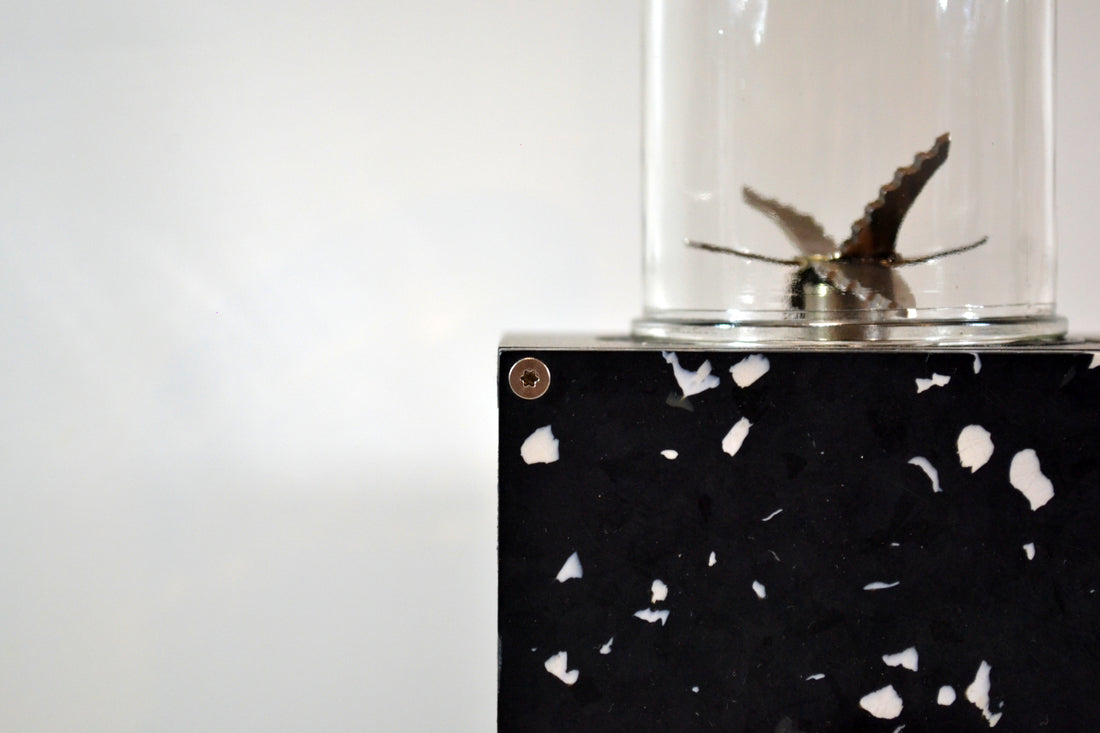
Designing home electronics for a circular economy
Share
Imagine a world where electronic products - any circuits or electrical components with a power or battery supply - are designed to last forever. When a product stops working, you can just repair it yourself, with your own tools or at the local repair shop. If a part breaks, you can just replace it. And if none of that is possible, the product is disassembled into basic components: the ones which are still usable are reused for making new products, while the broken ones are recycled into new materials.
Together, these elements form a global supply of parts and materials which are compatible with each other, and which can forever be turned into new products, locally. What emerges is a system of decentralised production based on locally repaired, reused and recycled materials. Run on renewable energy, this system loops sustainably, and brings together users, producers, repairers and communities. It’s a great win for people and the planet altogether.
The e-waste problem
You may have heard that we have a big e-waste problem: more than 7kg of e-waste per person per year. With nearly 8 billion inhabitants on Earth, this leads us to 53 million tons of e-waste annually. And 80% of that doesn’t even get recycled, spilling huge amounts of harmful toxic waste into the environment.
Add to all the natural resources necessary to extract those materials and manufacture the products…and all the emissions generated to move all the goods across the planet - as production happens predominantly in Asian countries…and low standards in working conditions in the industry…and we have a problem.
We can’t just keep on making products that break or become obsolete in shorter and shorter life-cycles. We need to come up not just with better products, but with a better system, that’s good for people and the planet. Here’s how that could look like.
Principles for a new electronics economy
We can get to this new economy by adhering to a couple of core principles. They fit nicely with the concept of a circular economy: a system based on the principles of designing out waste and pollution, keeping products and materials in use, and regenerating natural systems.
Longevity
Like in the old days, things can be designed to last. This means choosing durable materials, sturdy joints and yes, a slightly higher price. It also means spending a bit more time in research and development, to figure out the best combination of elements.
Repairability
Repairing products is the easiest way of prolonging the lifetime of a device. Products are designed from the start to be easy to disassemble and repaired. Repairs can be enabled through good online documentation, making spare parts available at a decent cost, or by collaborating with/ setting up repair networks.
Modularity
Like Lego blocks, all parts share characteristics that allow them to easily be connected and integrated with each other, or upgraded. This goes beyond the product ecosystem of a single producer - and ensures that all parts, from all manufacturers, are compatible with each other.
Local manufacturing
The rapid development in technologies such as 3D printing, CNC milling and laser cutting, - coupled with the explosion in makerspaces around the globe - are making it possible to produce locally (again), at competitive prices. This is not only great for the creation of local jobs and activities, but also for the planet, as less transportation and emissions are needed. This, in turn, makes local refurbishing of products affordable.
Local sourcing
As most products are used and discarded in urban areas, our cities are quite literally urban mines. We can recuperate entire components which are still working, or extract precious materials embodied in broken parts, to be used for new products.
Open-source
Sharing designs open-source ensures that everyone is building on top of each other’s solution, instead of reinventing the wheel each time. This leads to rapid improvements and standardisation in the industry, increased sharing of knowledge and information, while maintaining the products easy to repair, modular, and upgradable.
Transparency
To be able to take care of our products, we need to know how they were made, what went into them, and who made them. Product passports store supply chain data about the product, from production, to use and second life - and makes it available when needed.
Human dignity
Producing and discarding electronics is notoriously damaging to the people dealing with them: from toxic fumes and contaminations, to the use of child labour. When products are made locally, for the local market, as described above, there is a natural tendency toward jobs with dignity. Producers are more trustworthy, more easy to verify, and simply more responsible towards their own community.
The more of these principles are applied, the better our system can work as a whole. What emerges is a system in which we get the benefits of technology, while creating vibrant communities and protecting the environment.
At Open Funk, we’re making home electronics that are ethically and locally made, built to last and never be wasted. re:Mix is our first product: a kitchen mixer that’s good for people and the planet. Register for updates to find out about the upcoming crowdfunding campaign.
